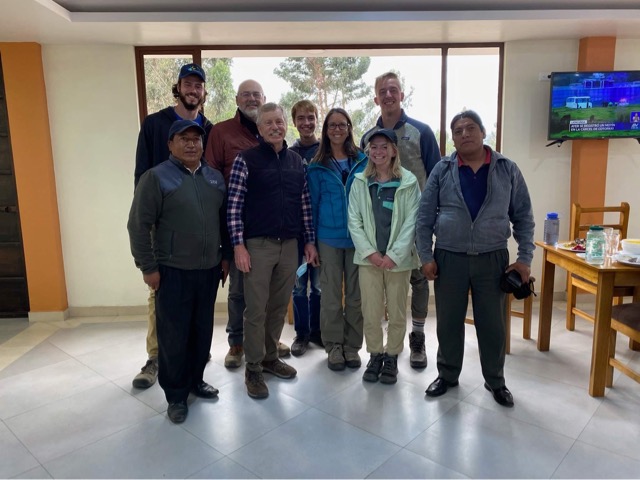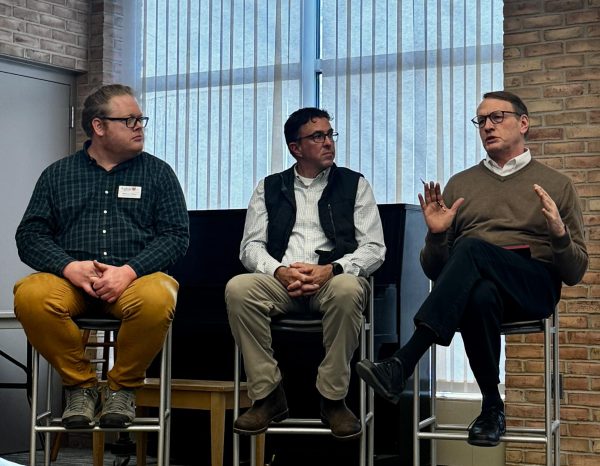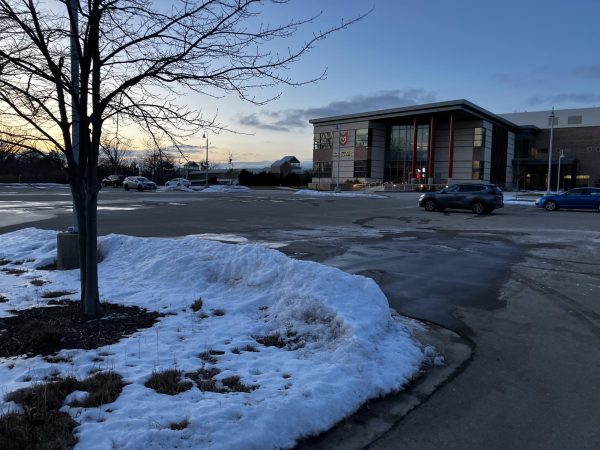Calvin scientists and engineers evaluate water distribution system in Ecuador
Photo courtesy of Derek Ten Pas
(from left to right, back to front) Michael, CODEINSE intern from George Fox University, Stu Dykstra, co-director of the Clean Water Institute, Aaron Wildschut, Derek Ten Pas, local aguaterro, Bruce Rydbeck, Professor Julie Wildschut, Carly, local aguaterro.
Chemistry professor Chad Tadko, engineering professor Julie Wildschut and senior civil and chemical engineering students Derek Ten Pas and Carly Bogdajewicz conducted clean water research in rural Ecuador, an ongoing initiative organized by the Clean Water Institute during July and August 2021.
The Ecuadorian government has required that every community have access to disinfected water. There’s been a concerted effort from multiple parties to make that happen.
The Calvin professors and students partnered with Corporación de Desarrollo Integral Socio Económico (an Ecuadorian Christian nonprofit), Lifegiving Water (an American Christian nonprofit of environmental engineers), local Ecuadorian communities and the Ecuadorian government, which provided the necessary funds.
CODEINSE and Lifegiving Water have built various freshwater spring capture and distribution systems. Professors Tadko and Wildschut trained Ten Pas and Bogdajewicz to assess the newly developed CODEINSE method. The goal was to determine whether or not it was more effective than the other, more traditional methods. Tatko and Wildschut then left on July 26 while Ten Pas and Bogdajewicz stayed behind for 12 more days to do water quality testing.
The entire process was difficult. Ten Pas and Bogdajewicz took over 200 water quality tests, which generated a lot of data to examine. Since they were traveling all the time, they also had to make sure that their petri dishes were getting airflow so the bacteria wouldn’t die. They also had mishaps such as a flat tire from landslide debris, which caused them to stay up until 1 a.m. the following morning counting bacteria.
Nevertheless, Ten Pas and Bogdajewicz felt that the hard work was worth it.
“A lot of times chemical engineering is just working the plant or working the factory, which has never really interested me as much as something like this — clean water and global development,” Bogdajewicz said. “It was really cool to be around people who are super passionate and smart and innovative.”
Currently, Tadko, Ten Pas and Bogdajewicz are in the process of analyzing the data. According to Tadko, they wanted to “pull together all the data to see — we’ve got experience, we’ve got intent, we’ve got good design, but does it matter?” Right now, the answer seems to be that it does.
“The CODEINSE model has a higher percentage of low risk than other strategies. And that distribution is statistically distinct from other collection models,” Tadko said. “So the CODEINSE model results in a statistical biasing towards no bacteria, [which is] what you want.”
Next, the team will write three papers on the results. One will be about centralized disinfection using chlorine treatment. Another will be about CODEINSE’s new method of spring capture. And the last will be about how to install this form of spring capture and what to do when faced with different situations or complications.







